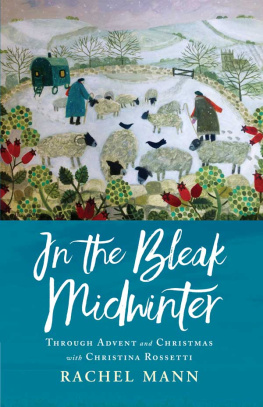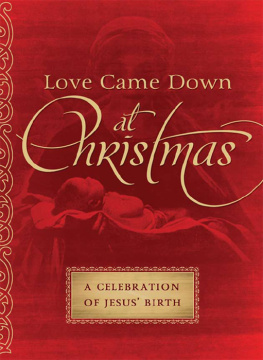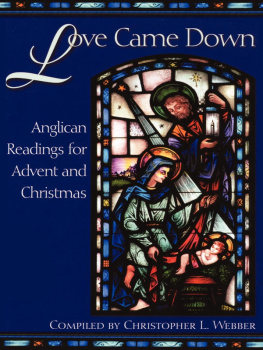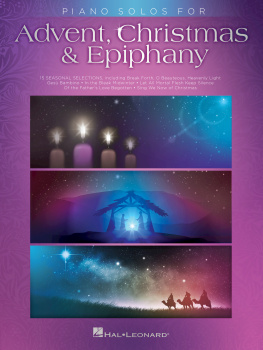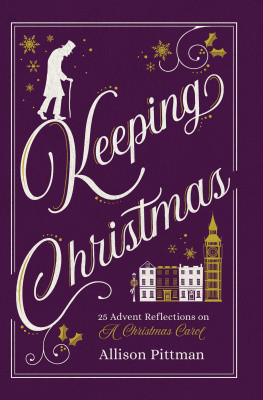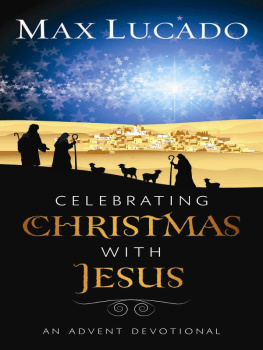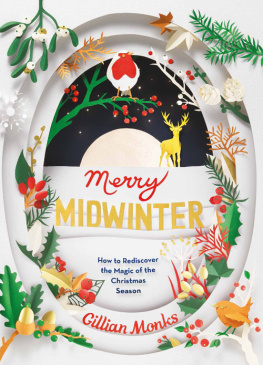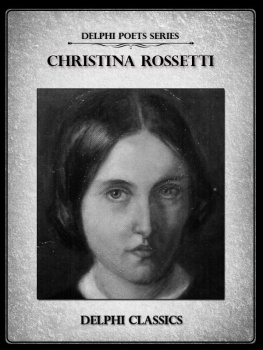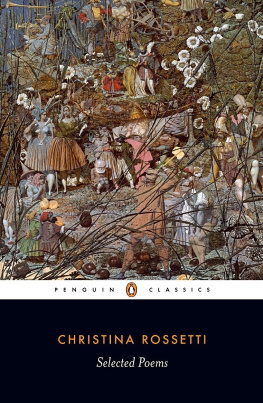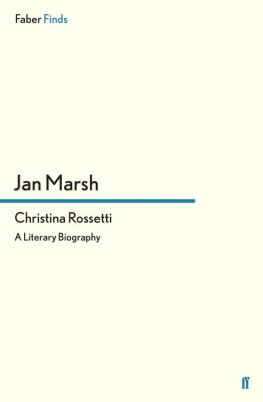In the Bleak Midwinter
Through Advent and Christmas with Christina Rossetti
Rachel Mann
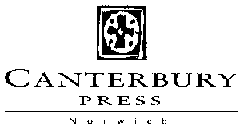
Rachel Mann 2019
First published in 2019 by the Canterbury Press Norwich
Editorial office
3rd Floor, Invicta House
108114 Golden Lane
London EC1Y 0TG, UK
www.canterburypress.co.uk
Canterbury Press is an imprint of Hymns Ancient & Modern Ltd (a registered charity)

Hymns Ancient & Modern is a registered trademark of Hymns Ancient & Modern Ltd
13A Hellesdon Park Road, Norwich,
Norfolk NR6 5DR, UK
All rights reserved. No part of this publication may be reproduced, stored in a retrieval system, or transmitted, in any form or by any means, electronic, mechanical, photocopying or otherwise, without the prior permission of the publisher, Canterbury Press.
The Author has asserted her right under the Copyright, Designs and Patents Act 1988 to be identified as the Author of this Work
British Library Cataloguing in Publication data
A catalogue record for this book is available from the British Library
978 1 78622 162 9
Typeset by Regent Typesetting
Printed and bound in Great Britain by CPI Group (UK) Ltd
Contents
Introduction
Morning and evening
Maids heard the goblins cry:
Come buy our orchard fruits,
Come buy, come buy:
Apples and quinces,
Lemons and oranges,
Plump unpecked cherries,
Melons and raspberries,
Bloom-down-cheekd peaches,
Swart-headed mulberries,
Wild free-born cranberries,
Crab-apples, dewberries,
Pine-apples, blackberries,
Apricots, strawberries;
All ripe together
In summer weather,
Morns that pass by,
Fair eves that fly;
Come buy, come buy
Advent is traditionally a season of repentance and prayerful discipline. Readers might raise eyebrows that this book which uses poetry to trace the rigorous power of Advent, as well as the joy of Christmas begins with lines from Christina Rossettis most ravishing and voluptuous poem Goblin Market. Further, that rather than begin with her most famous devotional poem, from which this book takes its title, I begin with lines that show Rossetti in fantastical and secular mode.
Goblin Market might seem very far from this books titular poem (properly called A Christmas Carol) whose themes of Christmas joy and intimacy are framed in taut and restrained lines:
In the bleak mid-winter
Frosty wind made moan,
Earth stood hard as iron,
Water like a stone;
Snow had fallen, snow on snow,
Snow on snow,
In the bleak mid-winter
Long ago.
Our God, Heaven cannot hold Him
Nor earth sustain;
Heaven and earth shall flee away
When He comes to reign:
In the bleak mid-winter
A stable-place sufficed
The Lord God Almighty
Jesus Christ.
Enough for Him whom cherubim,
Worship night and day,
A breastful of milk
And a mangerful of hay;
Enough for Him whom angels
Fall down before,
The ox and ass and camel
Which adore.
Angels and archangels
May have gathered there,
Cherubim and seraphim
Thronged the air,
But only His mother
In her maiden bliss
Worshipped the Beloved
With a kiss.
What can I give Him,
Poor as I am?
If I were a shepherd
I would bring a lamb,
If I were a wise man
I would do my part,
Yet what I can I give Him,
Give my heart.
However, I can think of no better place to start a book on the joys, tensions and complexities of Advent and Christmas devotions than Rossettis extraordinary words of excess in Goblin Market. It is a poem that, nearly 160 years on from its original publication in 1862, has lost none of its power to seduce and tease. A friend and colleague at Manchester Metropolitan University who has taught the poem for many years says she finds it impossible to read its list of fruits out loud without feeling hungry. Such is Rossettis grasp of the sensuous that her poetry can be quite literally mouth-watering. Indeed, I would go so far as to suggest that part of the power of her more obviously religious poetry often austere, careful and discreet is predicated on her profound understanding of the riches found in desire. Rossetti is only able to offer religious poetry of such demanding richness because she understands the depths of our desire and the sensuality of the body. Indeed, as many people have argued, if Goblin Market can be read as a child-like fable and Rossetti suggested it should it also contains extraordinary readings of the Eucharist and of the power of salvation, among many other things.
You might find this all very exciting, but think it very far from using Rossettis religious poetry to negotiate the seasons of Advent and Christmas. However, it is important leaven as we come to engage with her writings in religious contexts. Christina Rossetti was born on 5 December 1830 into a prominent Anglo-Italian family. Casual readers of her work will almost certainly know that she is the sister of one of the nineteenth centurys most prominent artists and poets, Dante Gabriel Rossetti, and may wish to set her with the Pre-Raphaelite Movement of which Dante Gabriel was part. Christina, however, is so much more. In recent years, her deep Anglican faith has been reckoned as significant not only as a key to understanding her poetry of faith, but as valuable to a mature understanding of her secular verse. Indeed, there are grounds for saying that in her mature poetry, one should not be too rigid in separating her poetry into the sacred and the profane. For, running through her writing and her understanding of the world ecological, aesthetic, personal and political is her Anglo-Catholicism.
In the Bleak Midwinter is, first and foremost, a book that is designed to accompany us deeper into mystery and faith. This is not the place to offer an account of the influence on her thought of what has variously been called the Oxford Movement, Tractarianism or Anglo-Catholicism. For now, it is simply worth acknowledging this: Rossetti was powerfully influenced by Kebles poetry of reserve which held that poetry was especially fit to speak of God and, in essence, is the handmaid of Christian belief. For the likes of Keble, the gift of poetry when properly deployed is to bring the believer ever closer to God and his Church.
Christina Rossetti was most serious about her faith. From as early as 1844, she attended Christ Church, Albany Street, whose minister, William Dodsworth, was a dedicated follower of the Tractarian movement (and who later converted to Roman Catholicism in 1851). Here she would not only have imbibed the centrality of the Eucharist for Christian faith, but have been exposed to a vision of the liturgical year charged with meaning and power. The most transformational encounter came during Advent 1848. Rossetti heard the Apocalyptic sermons The Signs of the Times preached at Christ Church by Dodsworth. Their impact was such that the poet never lost that sense of wonder and the expectation of the Second Coming of Christ. Running alongside that encounter was one with Kebles poetry. In 1827 John Keble had published a book of poems, The Christian Year , that traced his devotional response to the liturgical year. While Rossettis brother, William Michael, claimed that his sister thought nothing of Keble as a poet, her copy of Kebles The Christian Year was heavily annotated, and arguably taught her much about the way time and space can be constructed very differently from the mercantile, secular and consumerist world emerging in the nineteenth century.
Next page
